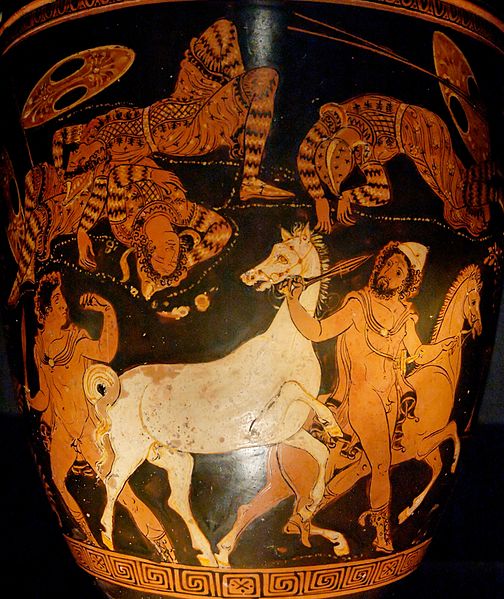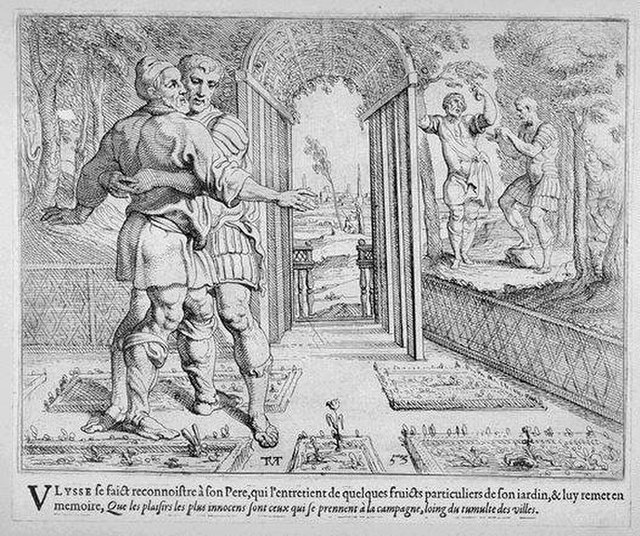In Greek and Roman mythology, Odysseus, also known by the Latin variant Ulysses, is a legendary Greek king of Ithaca and the hero of Homer's epic poem the Odyssey. Odysseus also plays a key role in Homer's Iliad and other works in that same epic cycle.
Head of Odysseus from a Roman period Hellenistic marble group representing Odysseus blinding Polyphemus, found at the villa of Tiberius at Sperlonga, Italy
Menelaus and Meriones lifting Patroclus' corpse on a cart while Odysseus looks on, Etruscan alabaster urn from Volterra, Italy, 2nd century BC
Odysseus and Diomedes stealing the horses of Thracian king Rhesus they have just killed. Apulian red-figure situla, from Ruvo
Roman mosaic depicting Odysseus at Skyros unveiling the disguised Achilles; from La Olmeda, Pedrosa de la Vega, Spain, 5th century AD
Ithaca was, in Greek mythology, the island home of the hero Odysseus. The specific location of the island, as it was described in Homer's Odyssey, is a matter for debate. There have been various theories about its location. Modern Ithaca has traditionally been accepted to be Homer's island. One recent alternative candidate is Paliki, which may have been an island separated from the rest of Kefalonia, as argued by Bittlestone, Diggle and Underhill in Odysseus Unbound. This theory, however, has not been generally accepted on grounds of geology, archaeology, philology, or historical and Homeric analysis. “What is clearly missing,” wrote Dr Christine Haywood reviewing Odysseus Unbound, “is a good knowledge of the complexities of Homeric language, and the support of archaeology.”
Ulysses meets his father Laertes on Ithaca (Theodoor van Thulden, 1600)





